Artist impression of an outflow of molecular gas from an active star-forming galaxy.
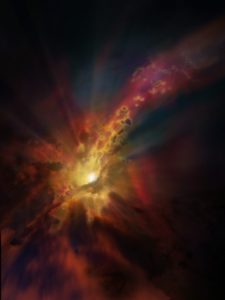
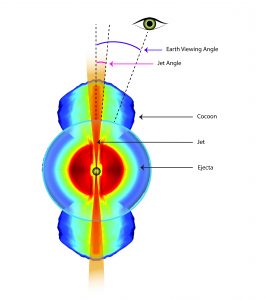
Jets that Appear Faster than Light
During the aftermath of the recent neutron star merger, ejecta from an initial explosion formed a shell around the black hole formed from the merger. A jet of material propelled from a disk surrounding the black hole first interacted with the ejecta material to form a broad “cocoon.” Later, the jet broke through to emerge into interstellar space, where its extremely fast motion became apparent. The jet appeared to be traveling four times the speed of light. This phenomenon is known as superluminal motion. It arises due to the jet traveling at nearly the speed of light and at a small angle relative to our line of sight. Since the jet is moving at nearly the speed of light, when a particle within the jet emits a bit of light the particle doesn’t fall far behind the bit of light it emitted. When a long time passes and the particle emits a second bit of light, it will do so close to the first one and when the light reaches us the particle will appear to have been moving faster than light.
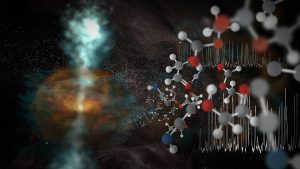
ALMA’s Highest-Frequency Capabilities
A team of scientists using the highest-frequency capabilities of the Atacama Large Millimeter/submillimeter Array (ALMA) has uncovered jets of warm water vapor streaming away from a newly forming star. The researchers also detected the “fingerprints” of an astonishing assortment of molecules near this stellar nursery. These two discoveries, made possible by ALMA’s highest-frequency capabilities, are depicted here in this artists impression.
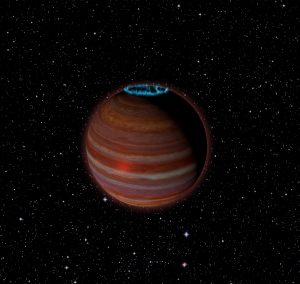
The Boundary Between Giant Planet and Brown Dwarf
Artist’s conception of SIMP J01365663+0933473, an object with 12.7 times the mass of Jupiter, but a magnetic field 200 times more powerful than Jupiter’s. This object is 20 light-years from Earth.
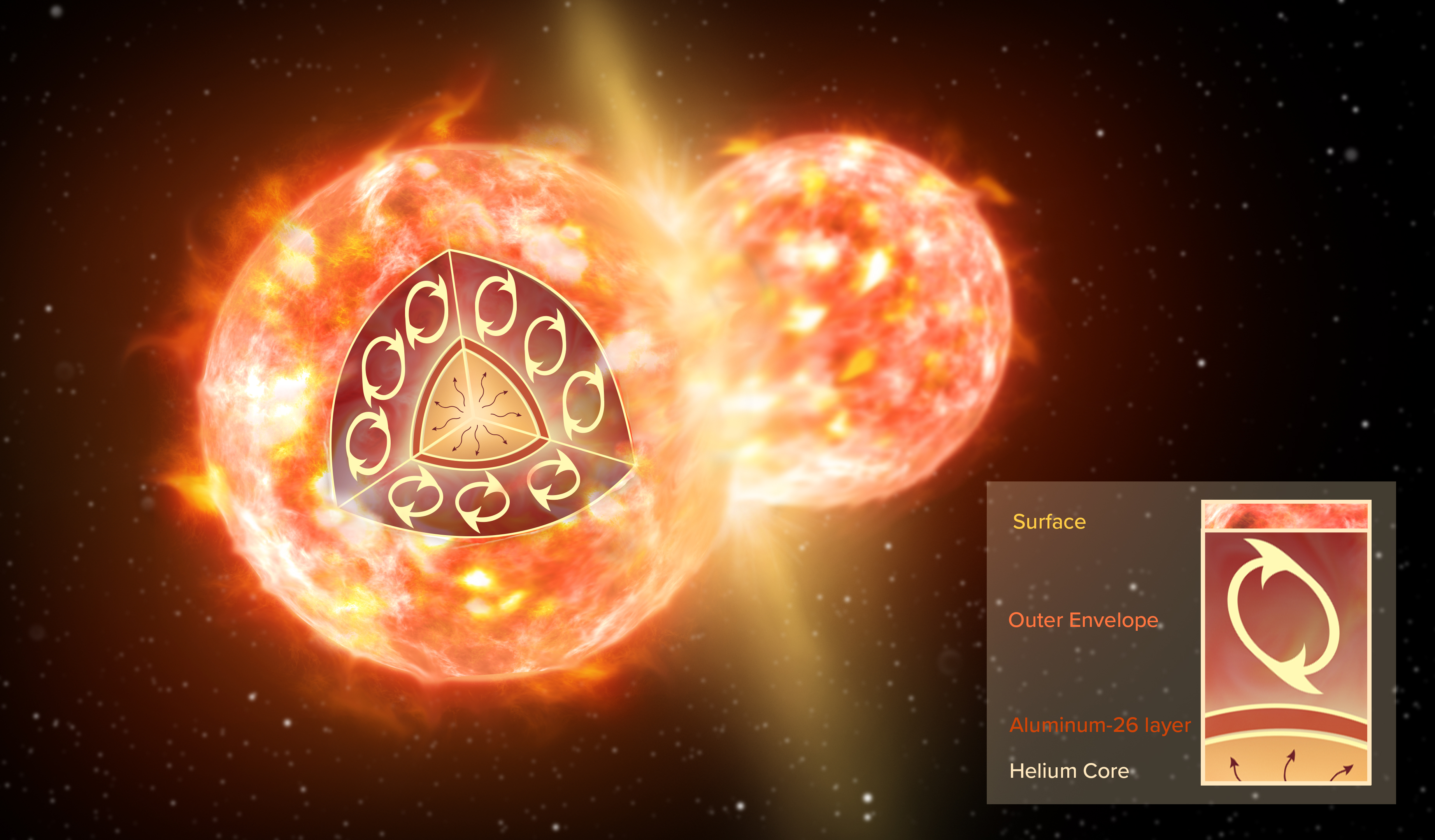
Artist Impression of CK Vul
Artist impression of the collision of two stars, like the ones that formed CK Vul. The inset illustrates the inner structure of one red giant before the merger. A thin layer of 26-aluminum (brown) surrounds a helium core. An extended convective envelope (not to scale), which forms the outermost layer of the star, can mix material from inside the star to the surface, but it never reaches deep enough to dredge 26-aluminum up to the surface. Only a collision with another star can disperse 26-aluminum.

ngVLA Artist Impressions: Galactic Ecosystem
In June of 2017, NRAO invited four artists to a conference at New Mexico Institute of Mining and Technology to interpret the four science cases that will drive the design of the ngVLA. Galactic Ecosystem by New Media Artist, Eddie Edwards: “This piece is not so much about the process of sequence of events, even though star formation and the cycle of regeneration are part of it, as it is about the ever-present activity of forces within the ecosystem — a grand ballet of magnetic fields, gases, pulsars, black holes and gravity fields that are not directly visible to us and are only understood through the interpretation of the energy they emit.”





